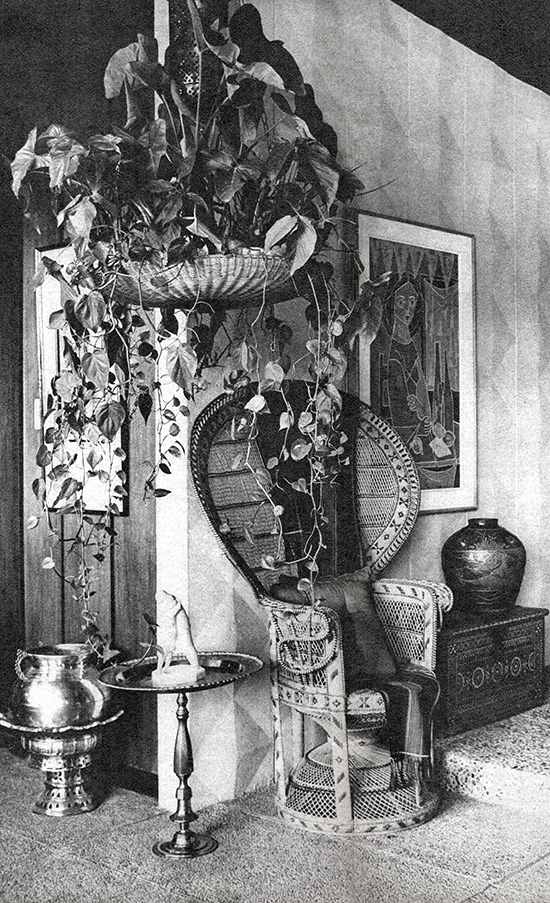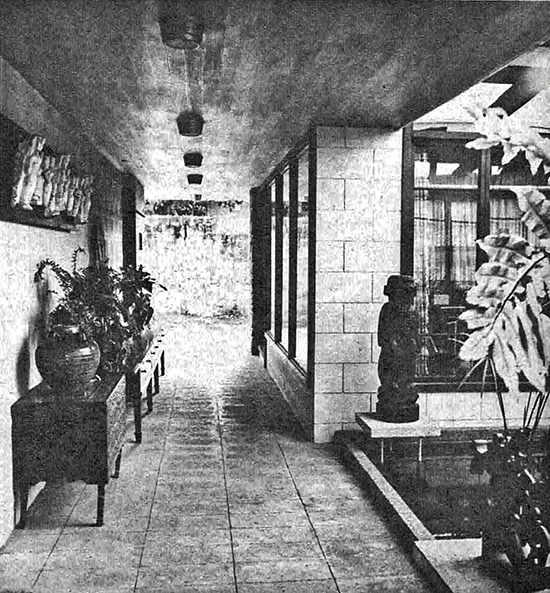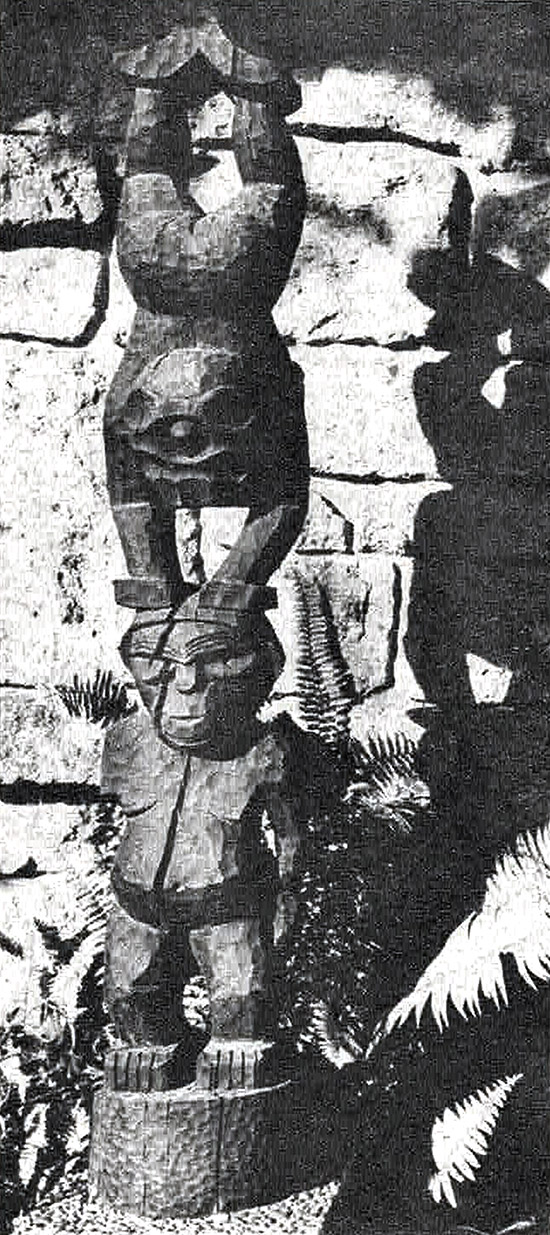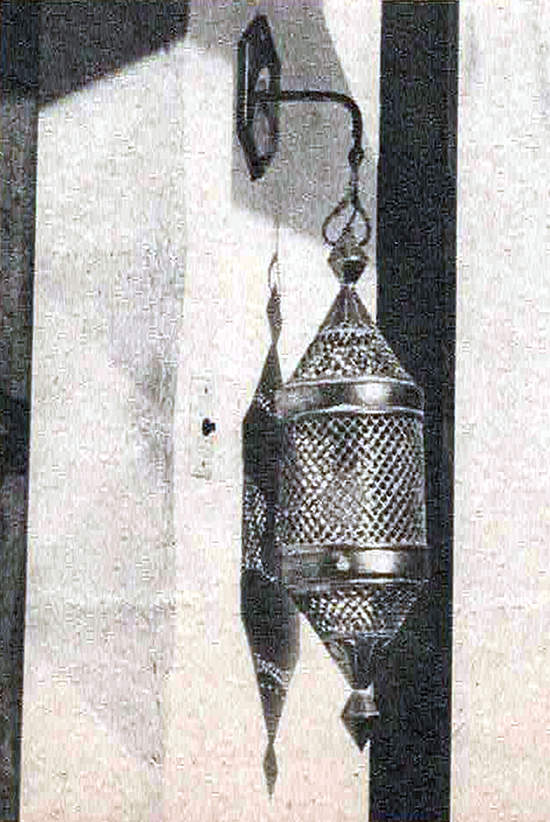Wili and Doreen Fernandez by design
Wili Fernandez imbued projects with distinctiveness hewn by knowledge of local materials — especially native hardwood — and inspired by the unique artistic diversity of the Philippines.
The freestanding suburban home, set in sprawling grounds away from the hustle and bustle of the city, was and still is, the aspiration of most Filipinos. The trend to live the subdivision life boomed in the late 1950s as middle-class Filipinos gained access to life in the ’burbs.
With this trend came the need to create spaces inside these homes, spaces that reflected an emerging nationalist aesthetic that was proudly Filipino. Architects in the 1950s took on this task. Many of them were post-WWII graduates of key institutions like the University of Santo Tomas, which produced National Artists in Architecture like Lindy Locsin, Francisco Mañosa, and Ildefonso P. Santos. A key member of this generation of designers was Wili Fernandez.

Fernandez, like IP Santos, was trained in architecture but decided to practice in a special field. Santos went into landscape architecture, while Fernandez found his passion in interior design.
There were only a handful of men and women in the field at the time, and this convinced Wili to establish a practice focusing on interior design in the late 1950s. His grounding in architecture gave him a solid base to build his skills in interior design. It also allowed him to adapt his designs to the modernist architectural movement of the mid-20th century, imbuing projects with distinctiveness hewn by knowledge of local materials (especially native hardwood) and inspired by the unique artistic diversity of the Philippines.

He was one of those who were influenced by southern cultures, specifically from the Maranaw. Wili introduced interior elements like lamps, vases, and trays made from the brass that was ubiquitous in Mindanao. He also melded Scandinavian furniture silhouettes with native weaves in rattan and bamboo. Fernandez’s interiors also used fabrics and polychromic influences of the south, painting these with resplendent hues of scarlet, red, and deep royal blue.

In those days it was prohibitive to bring in foreign furniture, so adaptation was name of the game and Wili Fernandez was a master. His architectural training was useful in helping him design bespoke furniture that benefitted from excellent Filipino craftsmanship.
Eventually, Wili’s works were featured in local magazines like Philippine Arts and Architecture in the early 1960s. This was followed by features in foreign publications like the Asia magazine, from which the images featured here come.

He was one of the founders of the Philippine Institute of Interior Design and served as national president for two terms. He pushed for recognition of the profession, which led ultimately to legislation regulating interior design under the Professional Regulation Commission alongside related disciplines of architecture and landscape architecture.
Wili shared his creative passions and life with his wife, Doreen Gamboa Fernandez. Doreen is one of the acknowledged stars of culinary writing and criticism in Asia. She was a prolific journalist with her newspaper columns and magazine articles. Doreen also published books on theater and cultural history, an offshoot of her role in the academe — she taught at the Ateneo and headed the departments of English, Communication, and Interdisciplinary Studies.

The couple shared a love of Philippine art and jazz music (they met at a jazz club in the ’50s). They displayed their collection of Manansalas, Legaspis, and other Filipino artists in their modernist bungalow in Mandaluyong. Its open plan featured a sunken living room and an interior courtyard that was punctuated by Maranaw pieces and distinctive elements like peacock chairs that set a trend in modern Filipino homes through the 1960s. (I grew up in a suburban home built in 1967 that featured a split-level living room, a Manansala, and a peacock chair!)
Wili passed away in 1998 and Doreen a few years later in 2002. The Doreen and Wili Fernandez art collection is now with The Museum at La Salle University in Manila.

Mid-century modernism in residential design is now back in vogue. Wili’s tasteful compositions, as seen in these images, have stood the test of time. His tasteful designs can inspire a new generation of interior designers, who can benefit from his body of work.

The new normal has also spawned the rediscovery of the joys and benefits of cooking at home, which Doreen’s writing addresses and informs. The past is the future and all we need is the collective Wili and Doreen.


